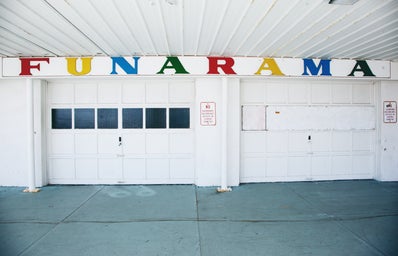History of “The Bright Stream”
One of three ballets composed by Shostakovich between 1929 and 1935, “The Bright Stream” was his least successful enterprise, which, like his other two ballets was banned soon after its premiere in 1935. However, unlike his other ventures, this final attempt at the lyric stage created the largest level of pushback, resulting in punishments for all levels of production heads. Most unfortunately, the ballet’s co-librettist (who in the case of ballet must have been the author of the plot) Adrian Piotrovsky, was sent to Siberia and never heard from again. Although Shostakovich and the choreographer were not punished to this extent, their careers were almost completely annihilated. For his part, Shostakovich’s music would never again be performed during the Soviet Era, with the exception of a highly censored suite of his most popular pieces.
You are probably wondering what could have been so heinous about “The Bright Stream” to have evoked this level of Stalin’s wrath. It is an especially odd thing to consider given that the ballet is set on a happy collective farm. Although I feel as though the producers should have taken more care when creating a comedy ballet in Soviet Era Russia (I will address the comedic nature of the ballet a little later in the article), it was its attempts at socialist realism combined with Stalin’s pre-existing hatred for Shostakovich’s previous work that spelled doom for “The Bright Stream”. While those involved with the production thought that incorporating collective/rural culture within the context of the ballet would be a politically correct way to show a happy Soviet world, detractors saw the act of placing farm workers “en pointe” as an unforgivable act of bourgeois consciousness and a blatant attempt to erase the “real” culture of individuals who lived on collectives. These views, likely combined with the comedic nature of the plot, caused the ballet to be banned until it was brought back to the Russian stage in 2003.
Synopsis of “The Bright Stream”
The ballet takes place on a Russian collective farm, where a group of dancers has come from the city to help celebrate the Autumn Harvest. The dancers attract a lot of attention, especially from an elderly couple who become enamored of the lead male and female dancers. The arrival of the dancers also sparks the reunion of two old friends, the Ballerina and her friend Zina. Although Zina now lives on the farm with her husband, the two girls became good friends at the dance school in the city where they studied together prior to Zina’s marriage. Excited by the reunion, Zina quickly introduces the Ballerina to her husband and is both stunned and hurt when he immediately falls for her. Upset, Zina confronts her friend, who, having no intentions to try and steal Zina’s husband, comes up with a plan to swap clothes with Zina in order to fool her husband that evening. Hearing of the plan, the male dancer, as well as other collective farmers decide to expand the plan to include fooling the elderly couple. That evening, while Zina’s husband spends time with his wife disguised as the ballerina, the ballerina and the male dancer swap clothing and flirt with the elderly couple. The next morning at the harvest celebration, Zina’s husband is confused by the presence of two masked Ballerinas. Eventually, Zina removes her mask and he realizes he had spent the evening falling in love with his wife. After speaking about it, the couple make up and the entire farm returns to their harvest celebration.
I first saw this ballet several years ago via the “Ballet in Cinemas” program done through certain movie theaters. This ballet is unlike any other ballet in many regards. To begin with, this comedic ballet is truly hilarious; even if you do not consider yourself a “ballet person”, I think you would make an exception for this production. A large part of the ballet is spent showing the results of the clothing swaps. It is not often in a ballet that you see a man dressed as a sylph stumble his way across the stage. Supported by the music, the choreography and the dancers make this a truly funny moment. In addition to the cross-dressing antics of the characters, there are also several other fun appearances, such as a bicycle-riding dog. Despite its humor, the skill of the dancers, as well as the talent and inspiration of the choreographers, is easily evident.
Beyond the comedic nature of the ballet, I also appreciate the way female friendship is portrayed. Unlike what we too often see in the media, the actions of Zina’s crappy, cheating husband do not affect the relationship she has with her old friend. Instead of reacting with misplaced jealousy and hatred, the two women talk to each other and choose to not fight over a man. Although the plot is rather easily resolved and does not account for the complexities of dealing with that kind of situation, I still absolutely love the way female friendships are portrayed in this ballet!
I hope this article has helped reveal the ballet we all need in our lives! Unfortunately, because of the nature of performances, it is not always super easy to access the performance. However, it is usually possible to find clips of the ballet on YouTube and to order recordings of the ballet from the internet. Happy watching!


